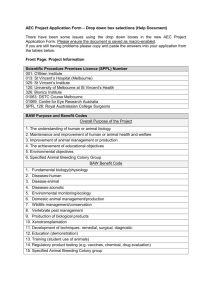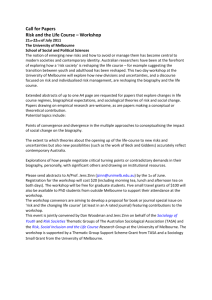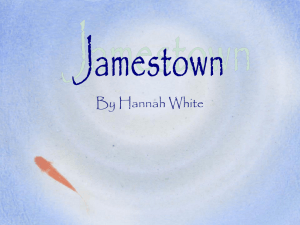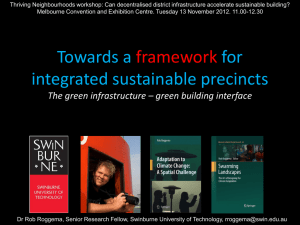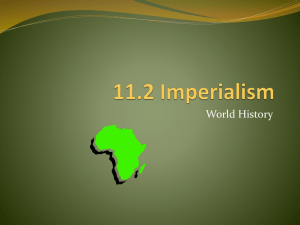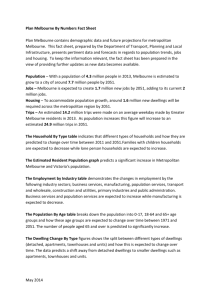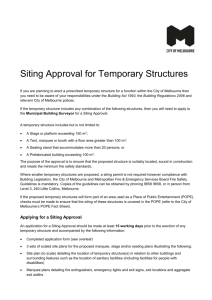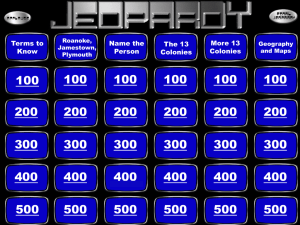Brief History of the PPD
advertisement
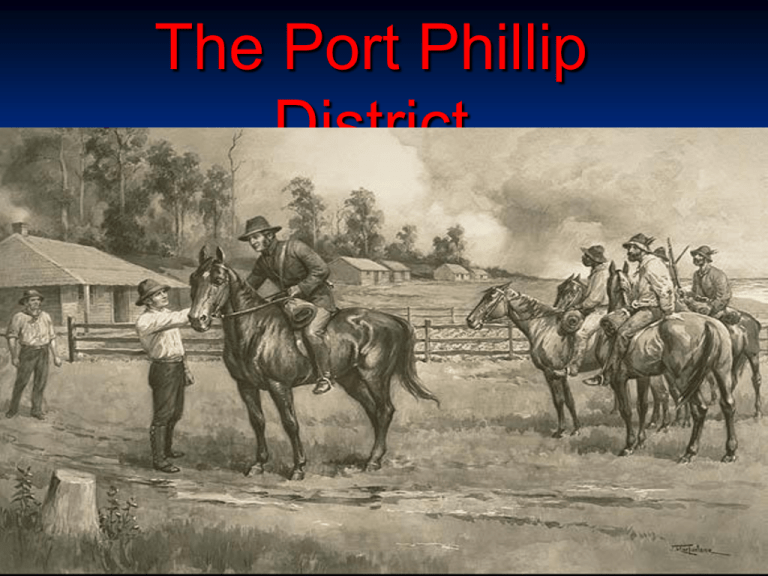
The Port Phillip District Immigration Why come? Europeans began arriving on the shores of what was to become know as Port Phillip in the 1820s. Immigration Push Horrendous conditions in Great Britain The land grab from Van Diemons land/over crowding Pull The lure of lush pastures and free land Free from convict taint. HOW? Shipping Agents (see Mirams etal) Govt sponsorship Paid your own way Freed/pardoned convicts Overland (inter-colonial migration) Ideas about land ownership Pre-conceived ideas about social organisation, law, culture and the means of production Civilised man Development of towns Agriculture and horticulture Molesting/manipulating the land Marvellous Melbourne Melbourne, originally known as ‘Bearbass’ was established in 1835 (officially 1837) Fawkner and Batman debate (who settled?) Visions for the colony Trade port Intellectual city Advancement and infrastructure Visions for the colony Governor Bourke Robert Hoddle (surveyor) Charles LaTrobe (1st Governor) John Pascoe Fawkner Redmond Barry (judge/ benefactor) Francis Ormond (businessman/ philanthropist Indigenous Australians Traditional mode of living / “to the Aborigines land was life itself ” • • Reciprocity Hunter - gatherer society Impact of European settlement • Dispossession (physical and cultural) Vices (a serious moral failing, immoral practice or undesirable habit) Violence Disease Advancement • • • • Responses Government response - protectorate - exclusions (forbidden to carry guns, La Trobe ordered Aborigines from central Melbourne) Settler’s response - benign/ benevolent - aggressive - inclusive Aboriginal response - submissive - aggressive -assertive/proactive The Protectorate What was its role? What were the aims? Who was involved? Why did it fail? VICTORIA: MELBOURNE 1851 Separation: Why was this essential to the colony? Township & infrastructure: The making of Marvelous Melbourne Immigration: Impact (benefits and disadvantage) GOLD Gold – discovery 1851 near Bathurst Transformed the colony from an agricultural outpost to a thriving metropolis Settlements - Ballarat, Bendigo, Castlemaine, Clunes, Daylesford, Geelong, Heathcote, Warrandyte What did the discovery of gold represent for the colony and the colonists? Short-term impact Mass migration Establishment of new towns Family abandonment Moral decay Illnesses New businesses Environmental degradation Long-term impact Metropolis that was Melbourne Economics/Wealth/prosperity Population (Chinese, Germans, Irish etc) Politics Cultural and educational advances The Land question- the selection Acts Environment Life on the diggings The diggings Men (fossickers, shop owners etc) Women (wives, mothers, entertainers etc) Migrants (Irish, Italians, Americans, Chinese, Germans etc) Natives Native police (1837 – 1853) Eureka and outcomes 1854 Background Licence fees and hunts Police brutality Events Scobie murder Bakery hotel People/groups/concepts Chartism The Ballarat Reform League Peter Lalor Outcome Gold Commission Licence fee £1 Political visions Male franchise Self-Government - the vote 1854 8 hour day (888) - 1856 1860 - 1888 Transforming the colony National identity Riding on the sheep’s back Working mans paradise Anti-immigrant Assimilation New labour market (Chinese and Kanakas) Unionism Urbanisation Industrialisation (railways, telecommunications, trade) Free and secular education 1866

